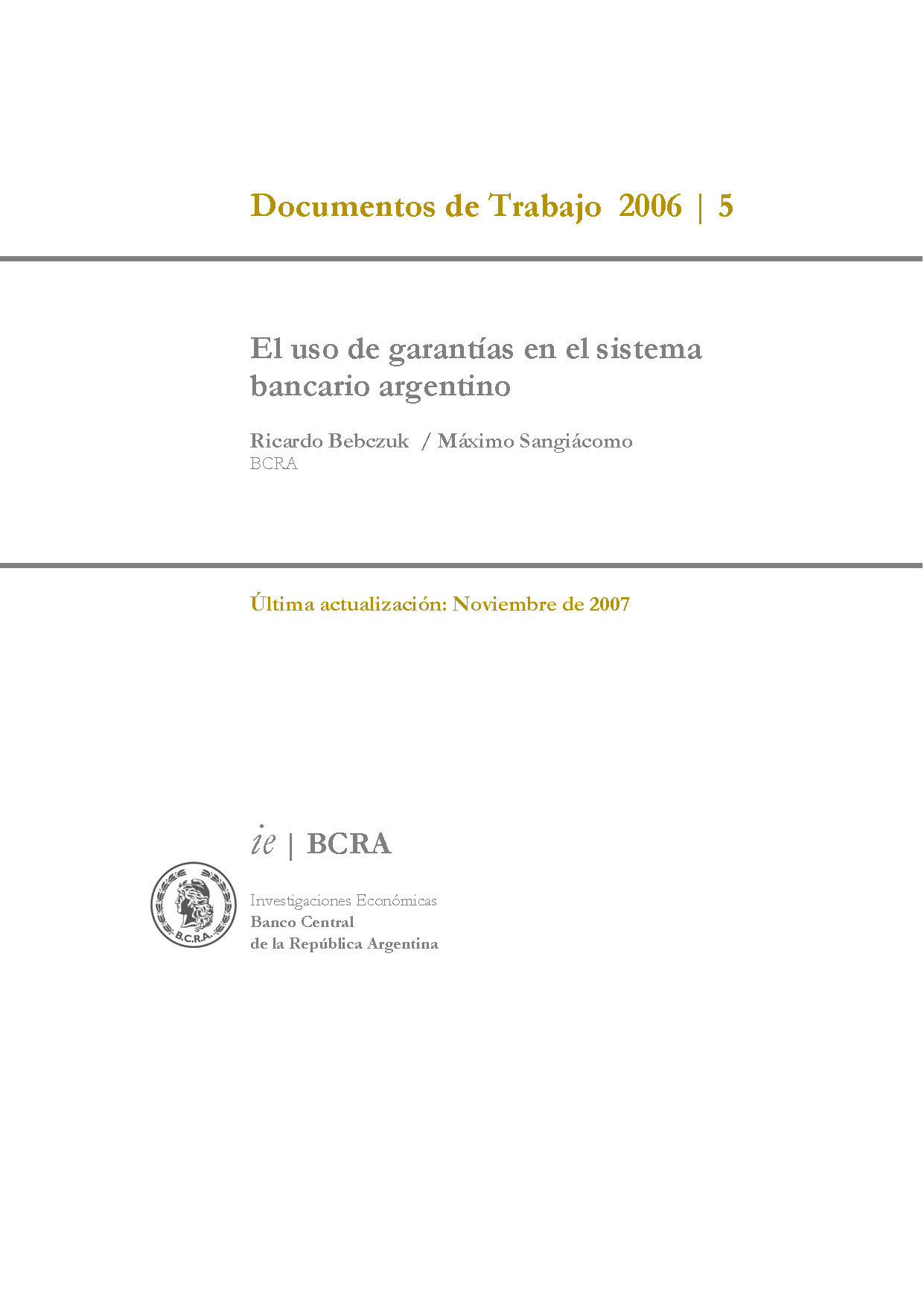The use of guarantees in the Argentine banking system
Working papers | 2006 | N 5
Keywords:
Credit guarantees, Banks, Central debtors, ArgentinaAbstract
The work analyzes in detail, for the first time in the Argentine case, the use of guarantees in the banking system, exploiting the information wealth of the Central Bank of Debtors and concentrating on loans to companies for which information is available. accounting throughout the period 2001-2005. After reviewing the theoretical and empirical literature on the subject and pointing out the advantages and disadvantages associated with the integration of guarantees, the microeconomic determinants of the probability of providing guarantees and the guaranteed percentage of bank debt are investigated. The results of the annual regressions support the traditional view that banks require more guarantees from riskier debtors. In particular, it is found that the probability of using collateral increases with the tangibility of the assets and with the number of credit relationships, and reduces with the size of the debtor and the proportion of short-term credit. The same variables, with the exception of the number of credit relationships, satisfactorily explain the guaranteed percentage. Surprisingly, no significant correlation of guarantees with the return on assets or with the debtor's situation was found. Some variables were significant only in some years—which is justifiable in light of the changing macroeconomic conditions of the period—but were nevertheless highly significant in the cross-sectional estimates, namely: the ratio of bank debt and liabilities total to total assets exerts a positive effect on the use of collateral, while the percentage of credit from foreign (public) banks has a negative (positive) impact.


